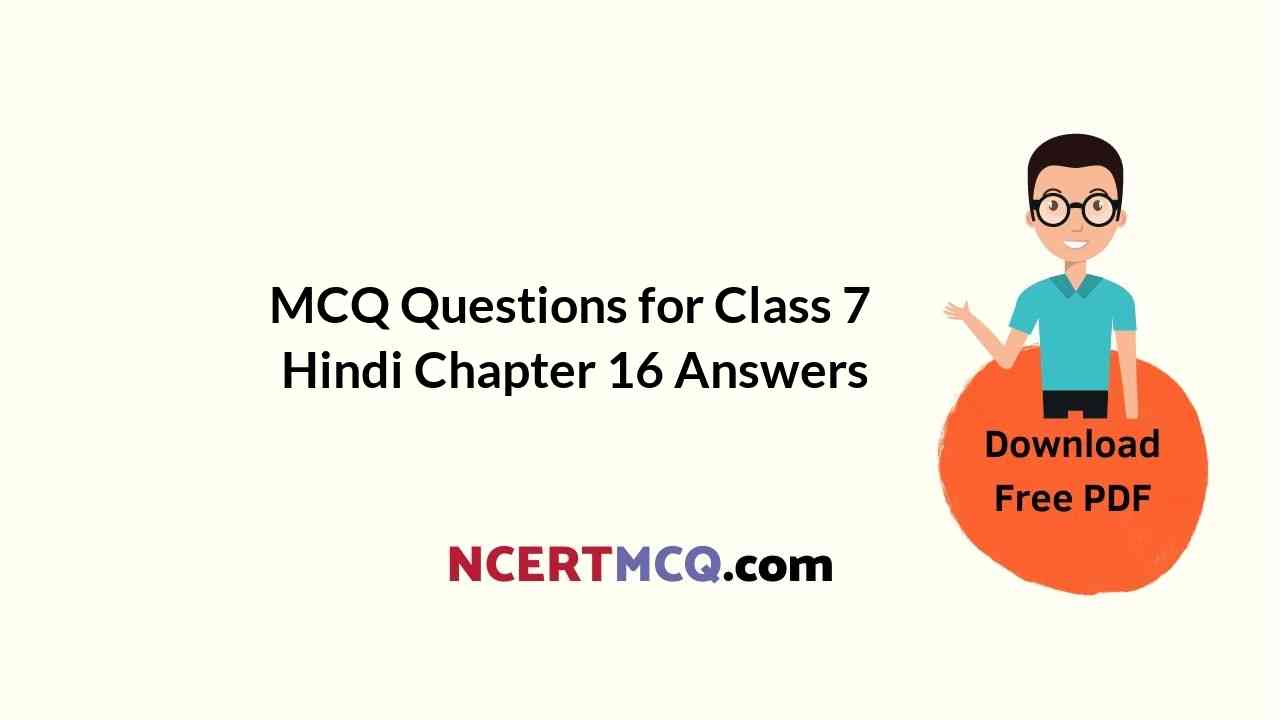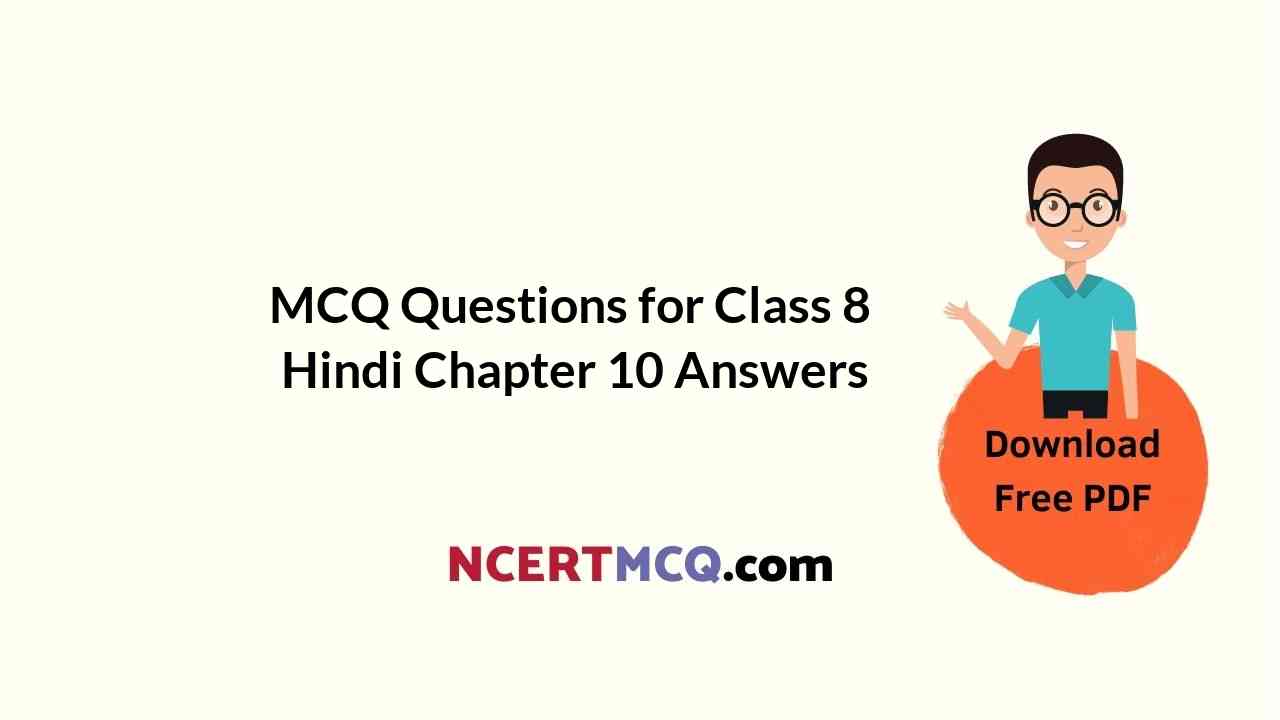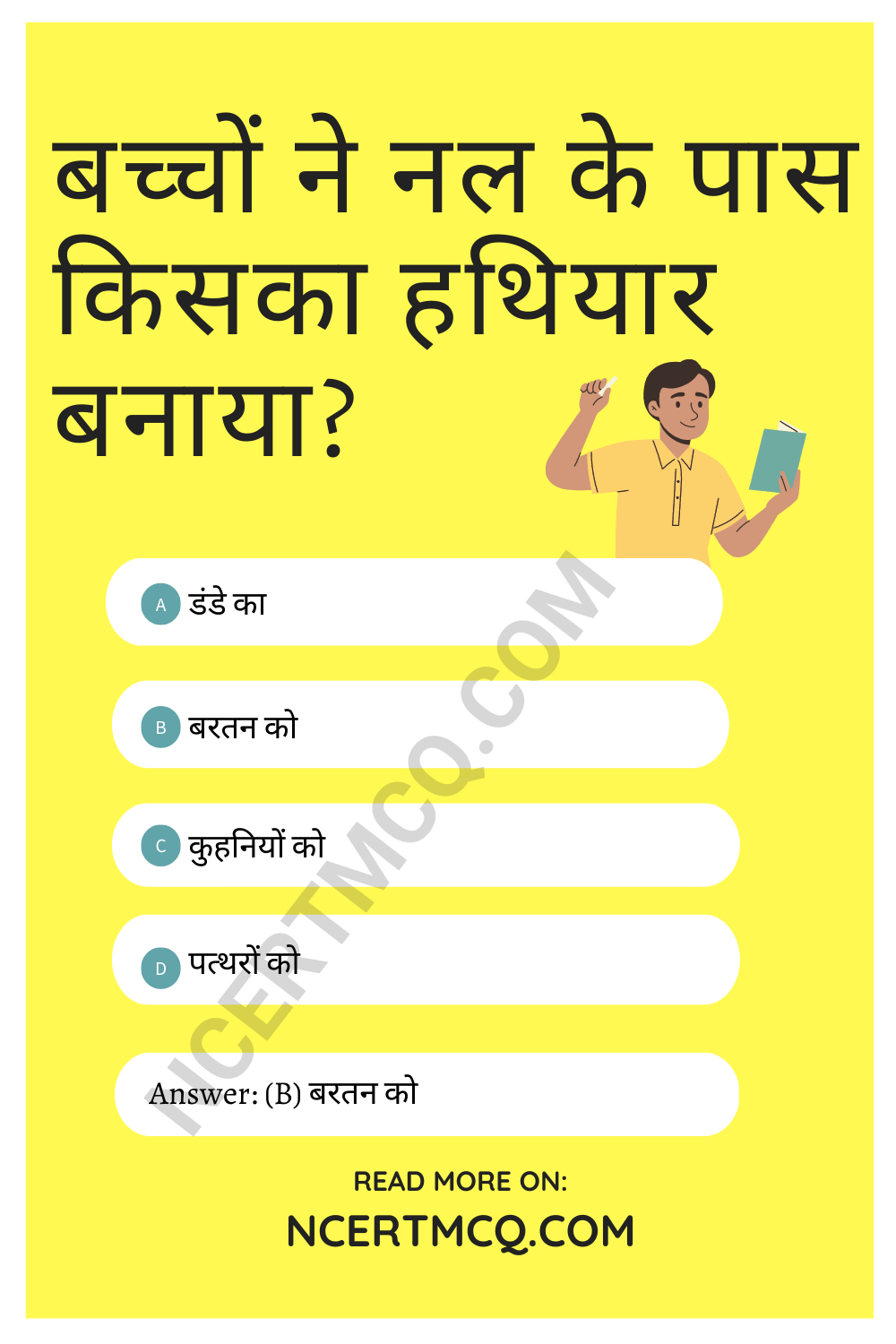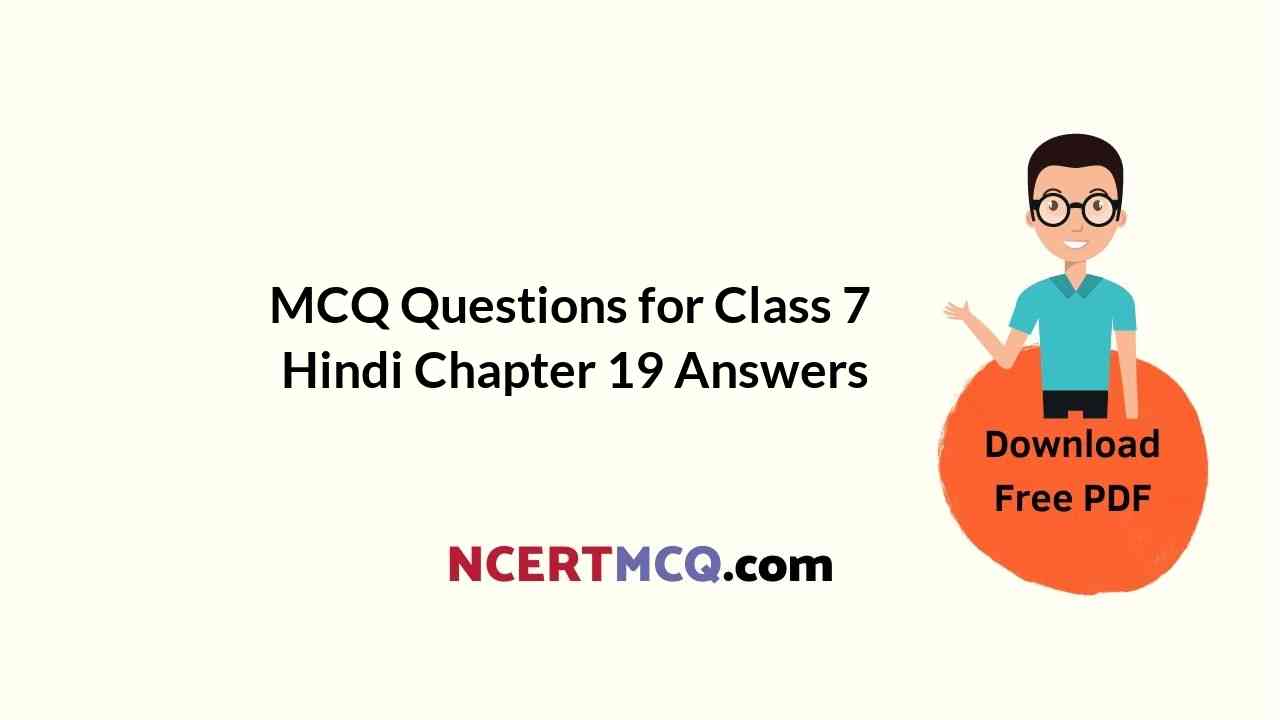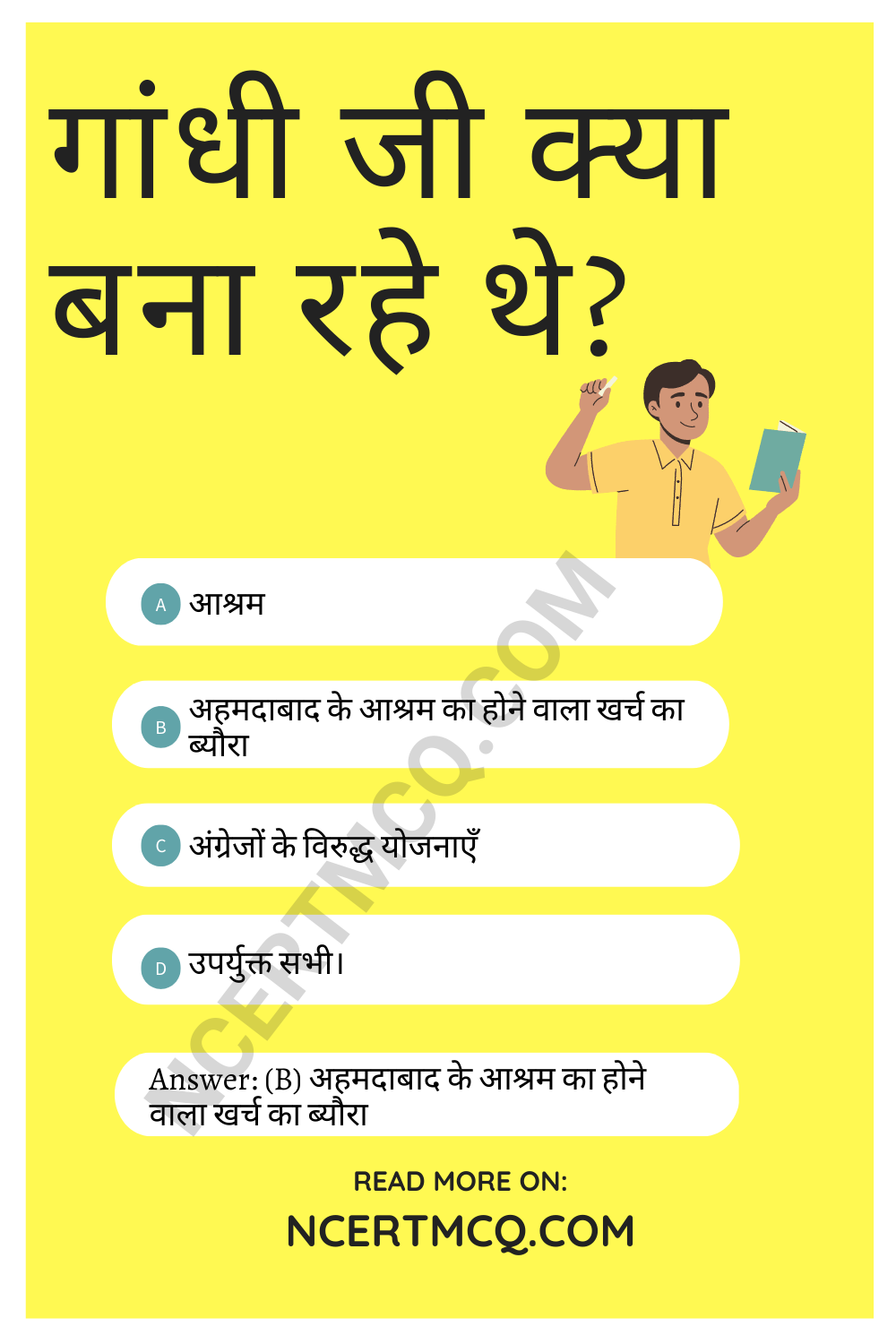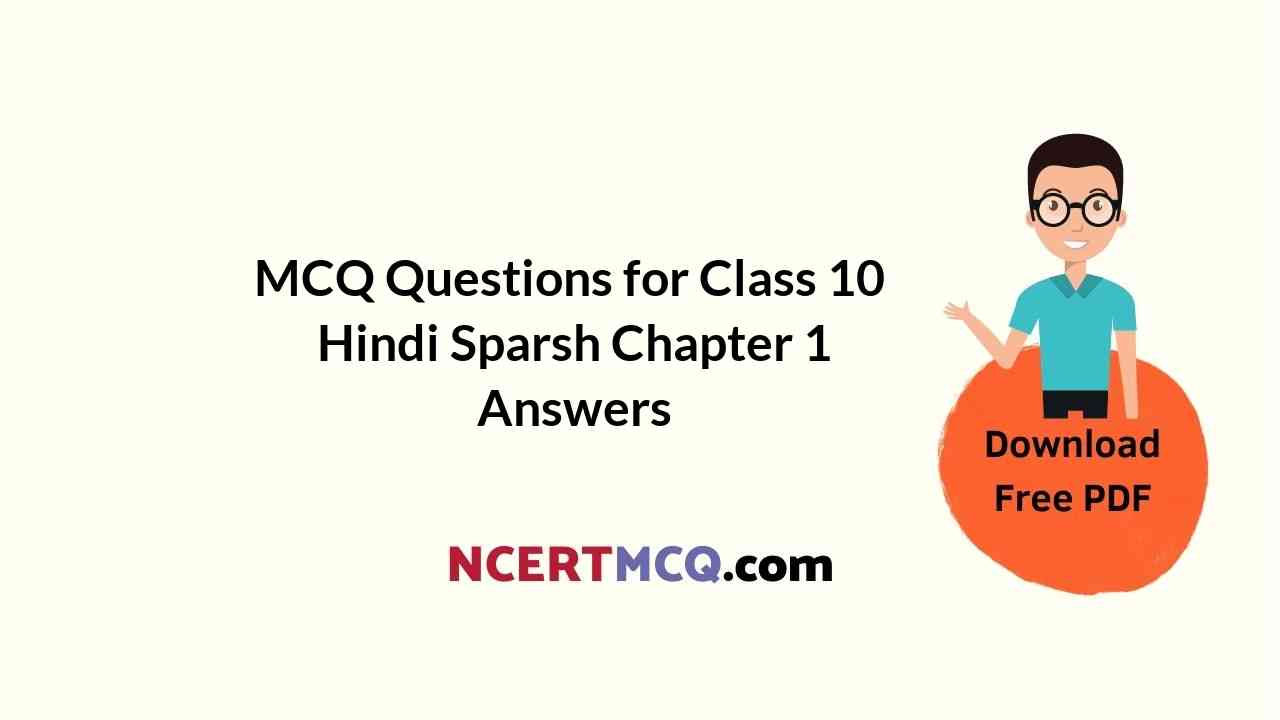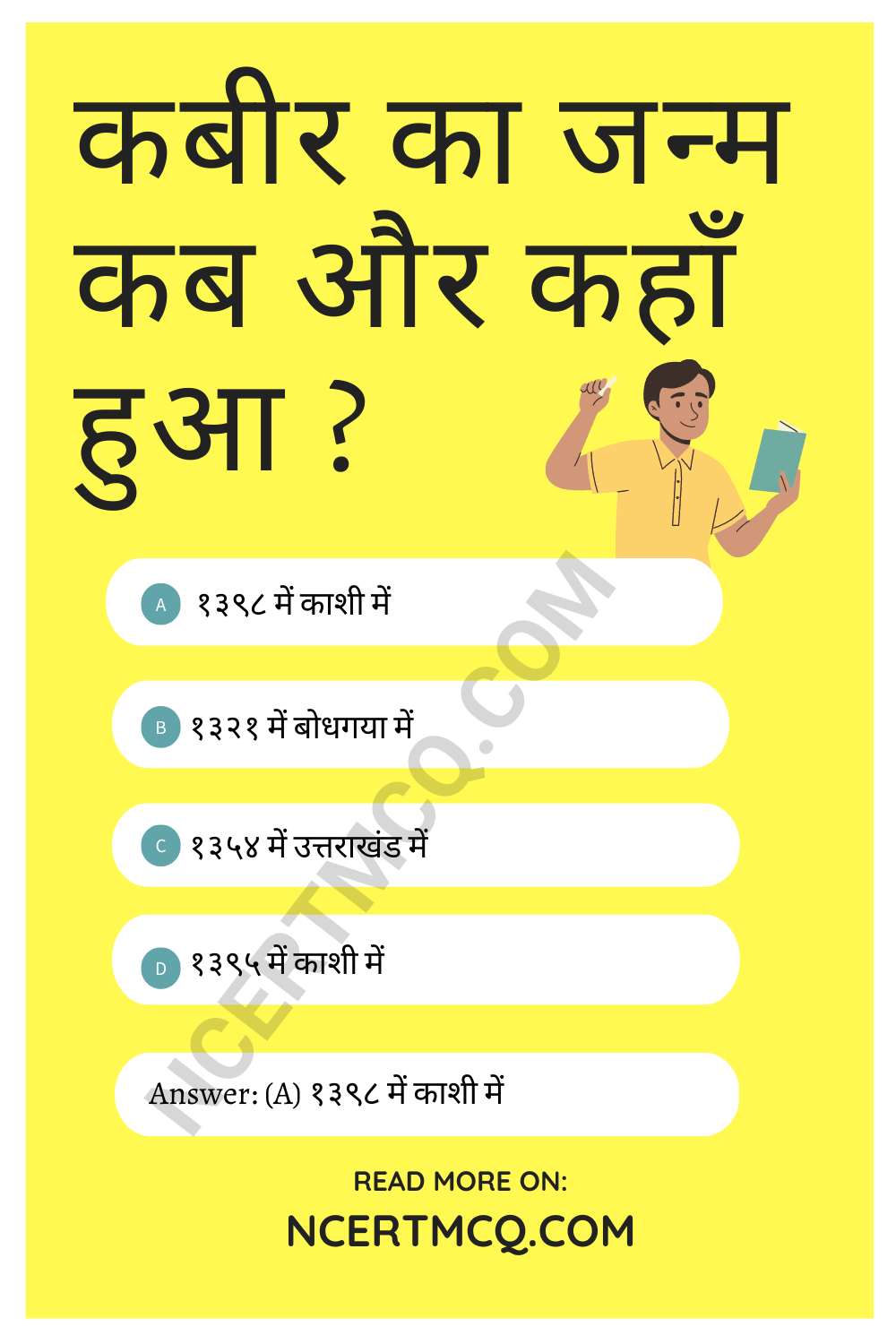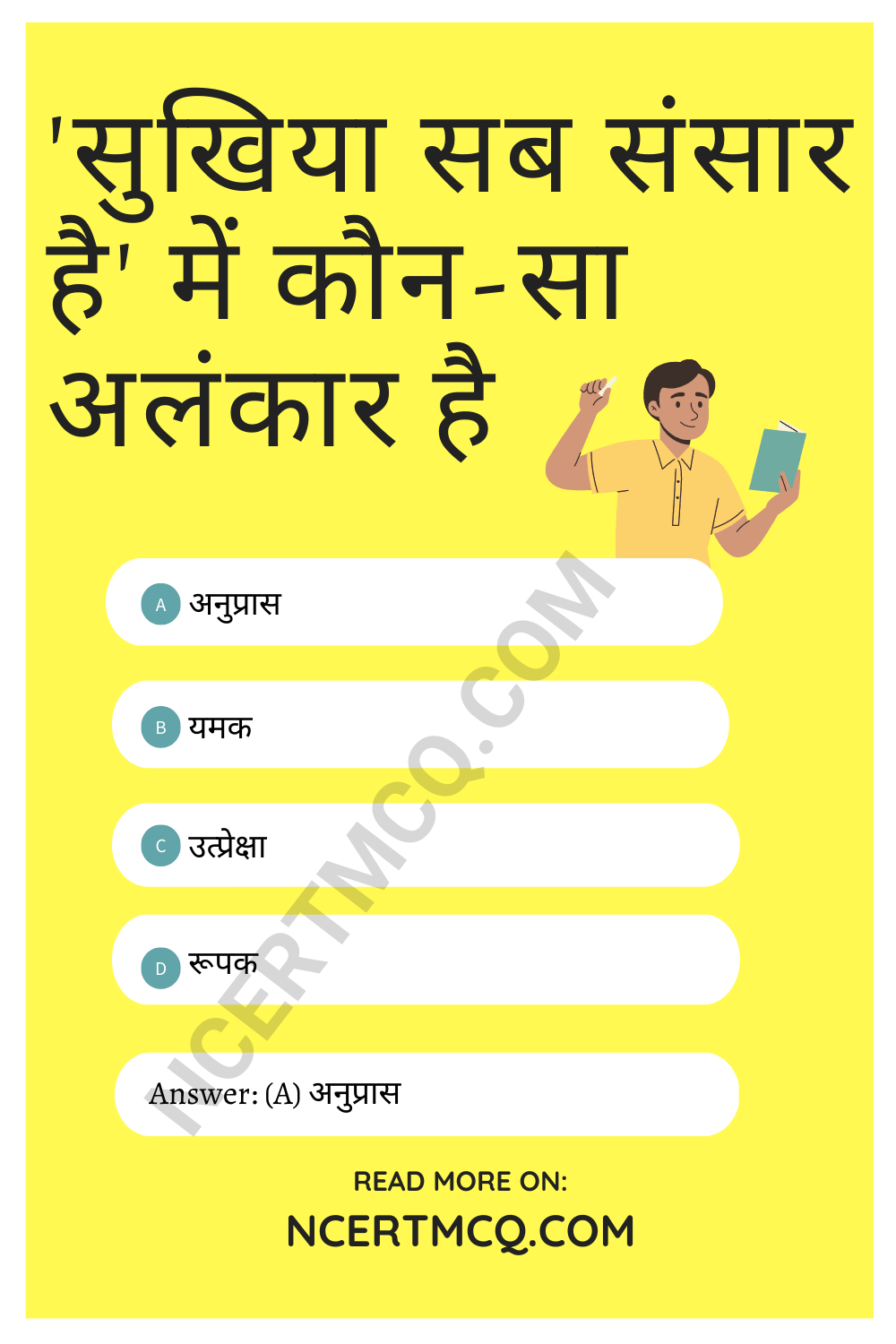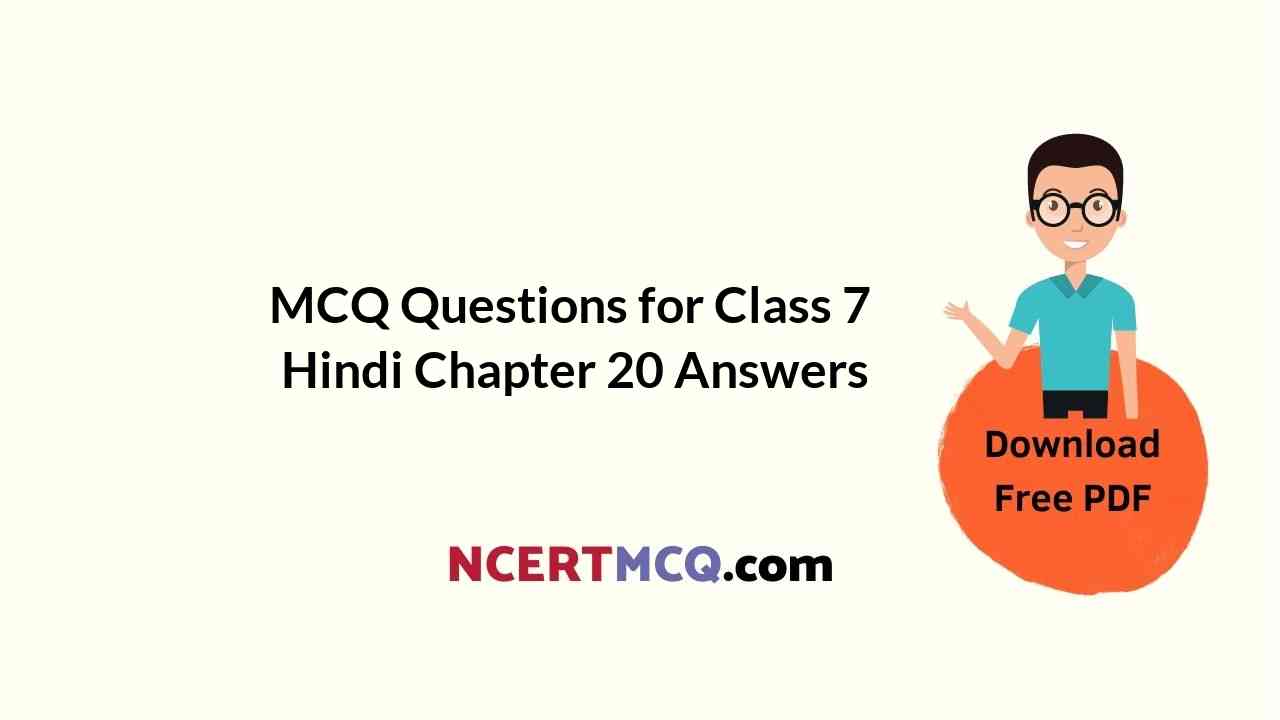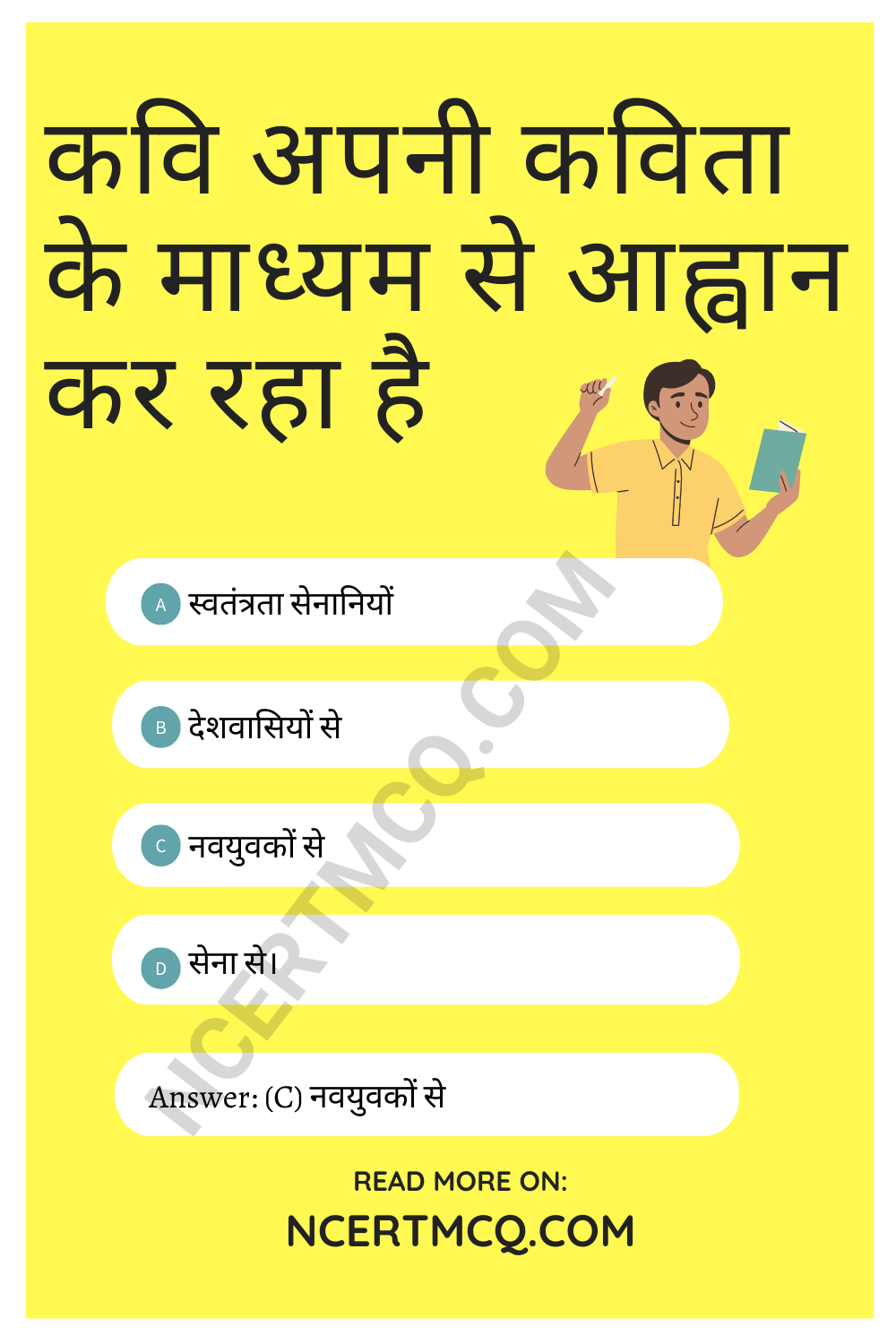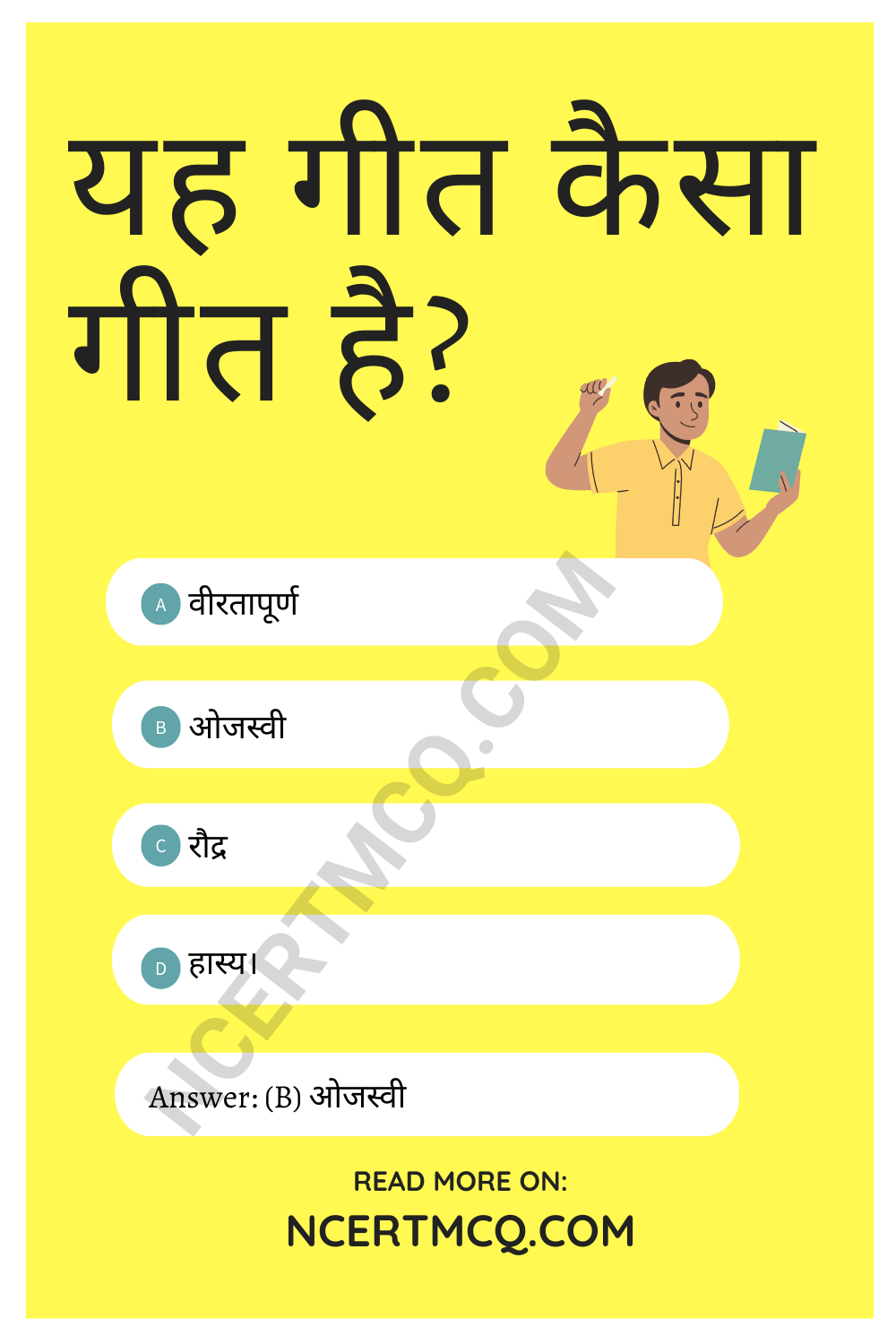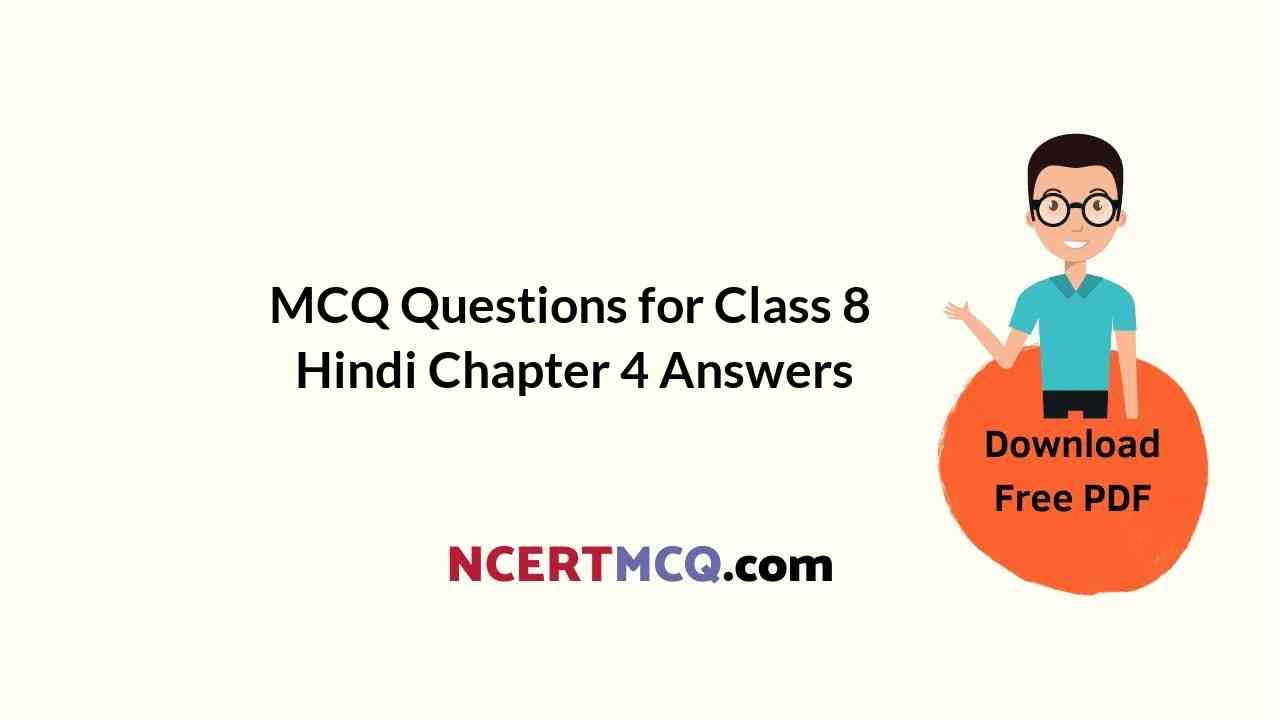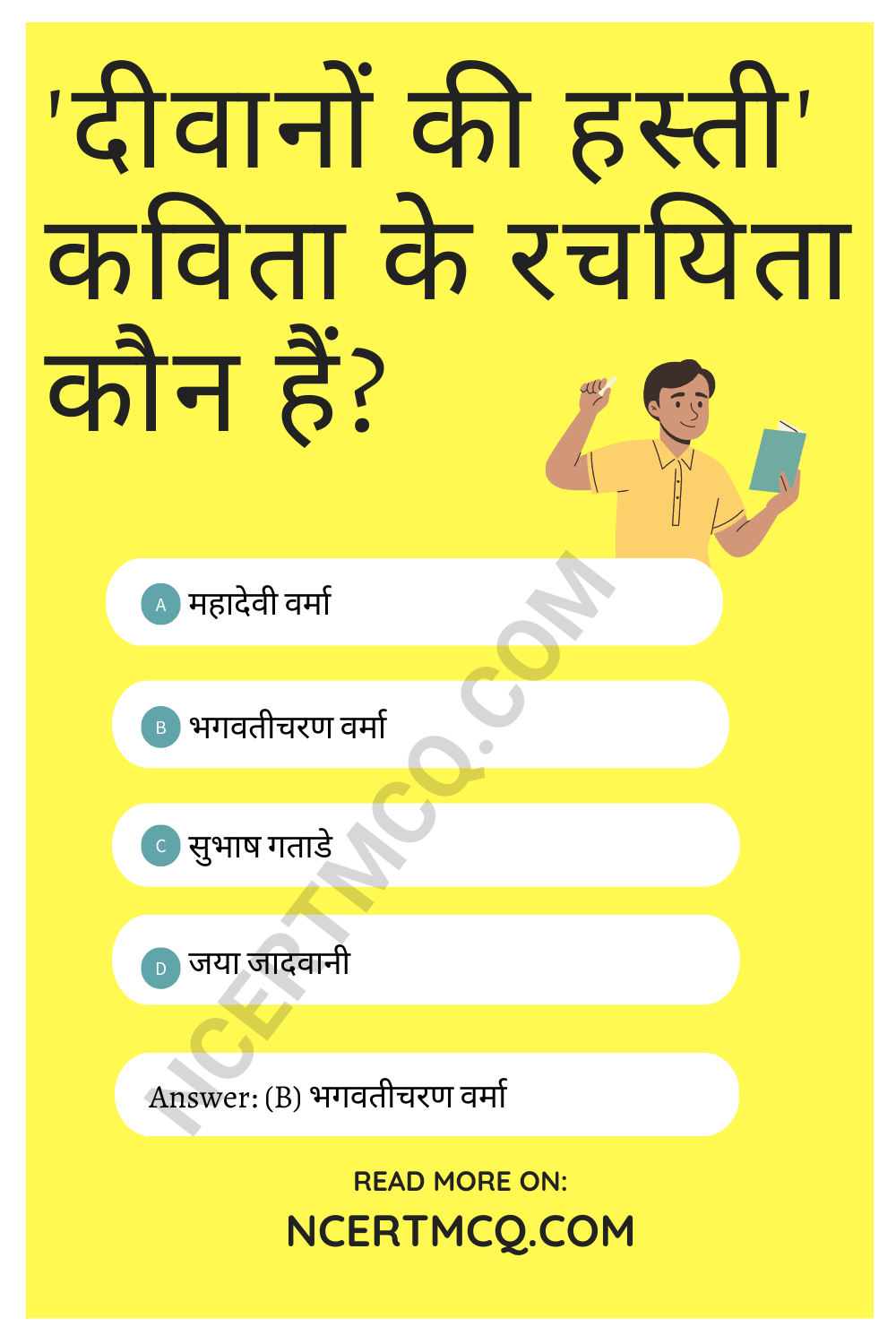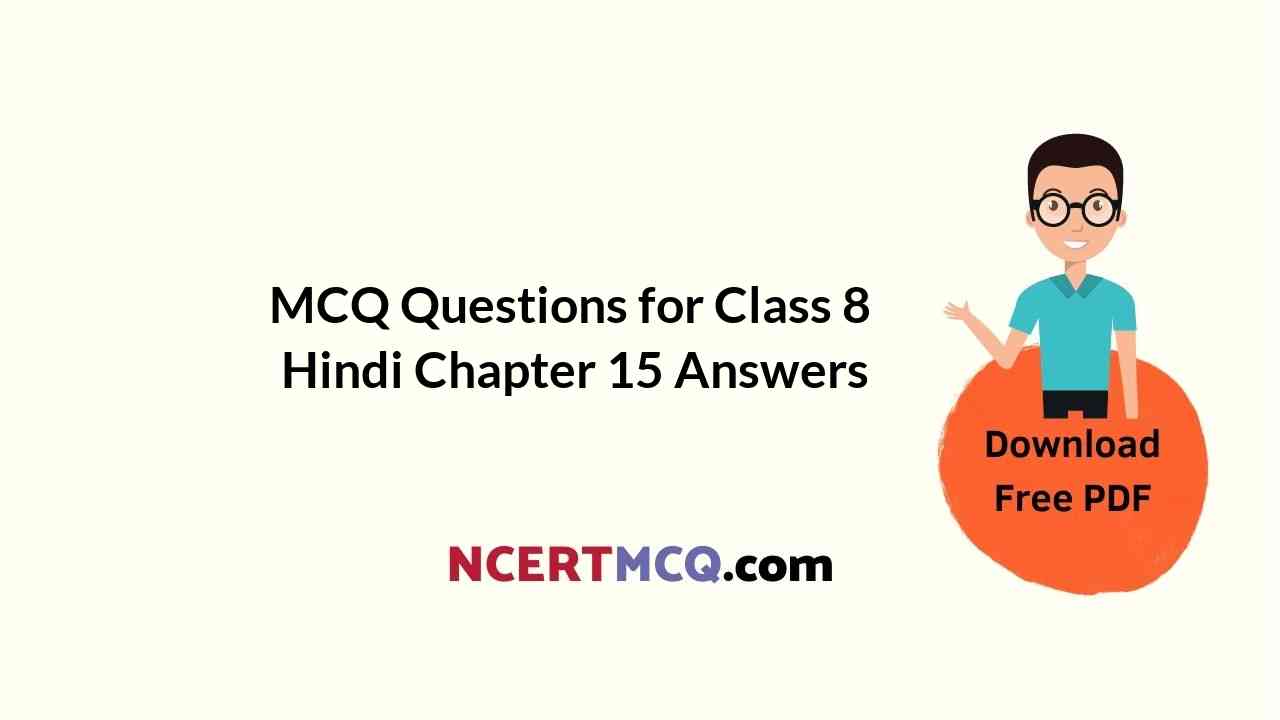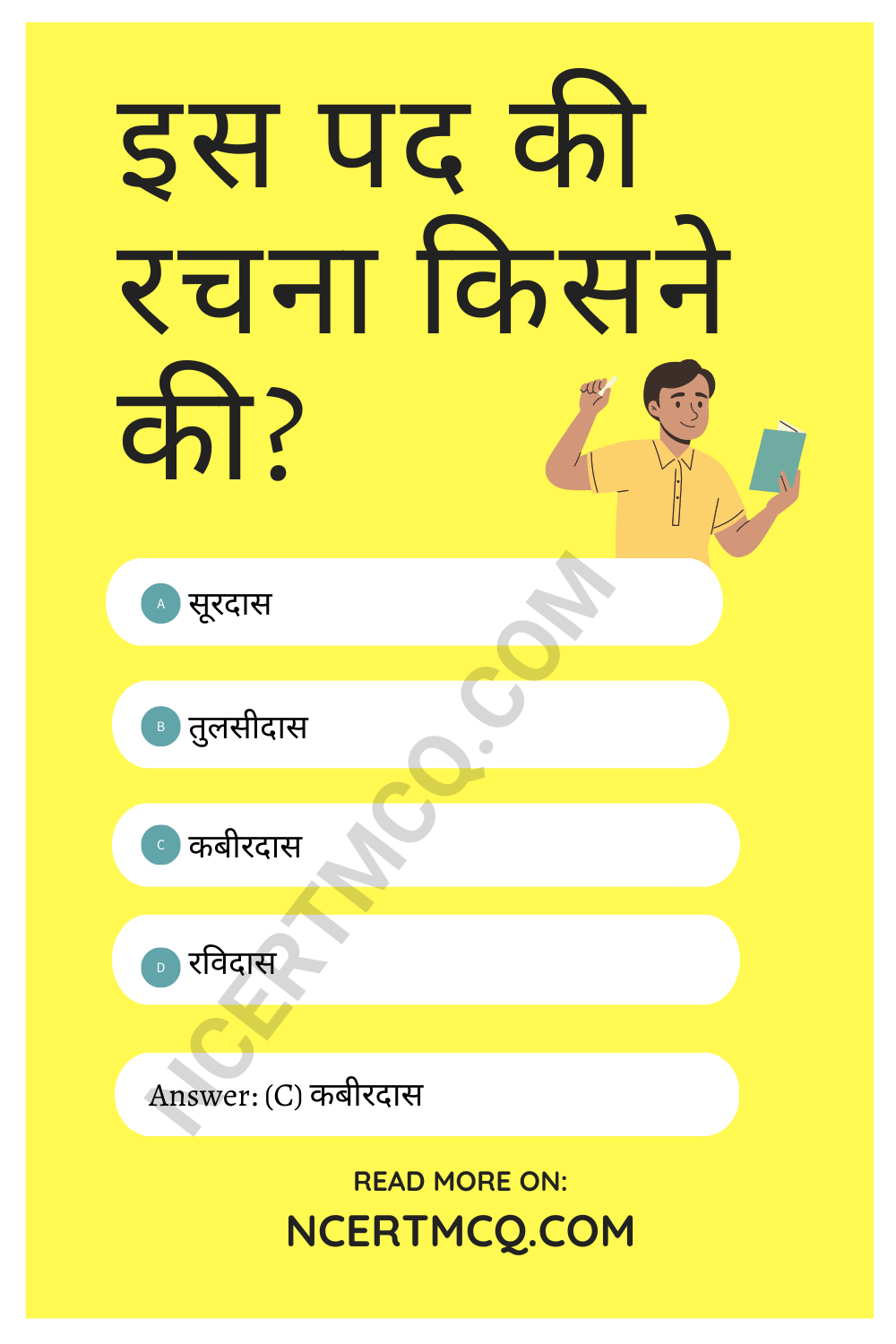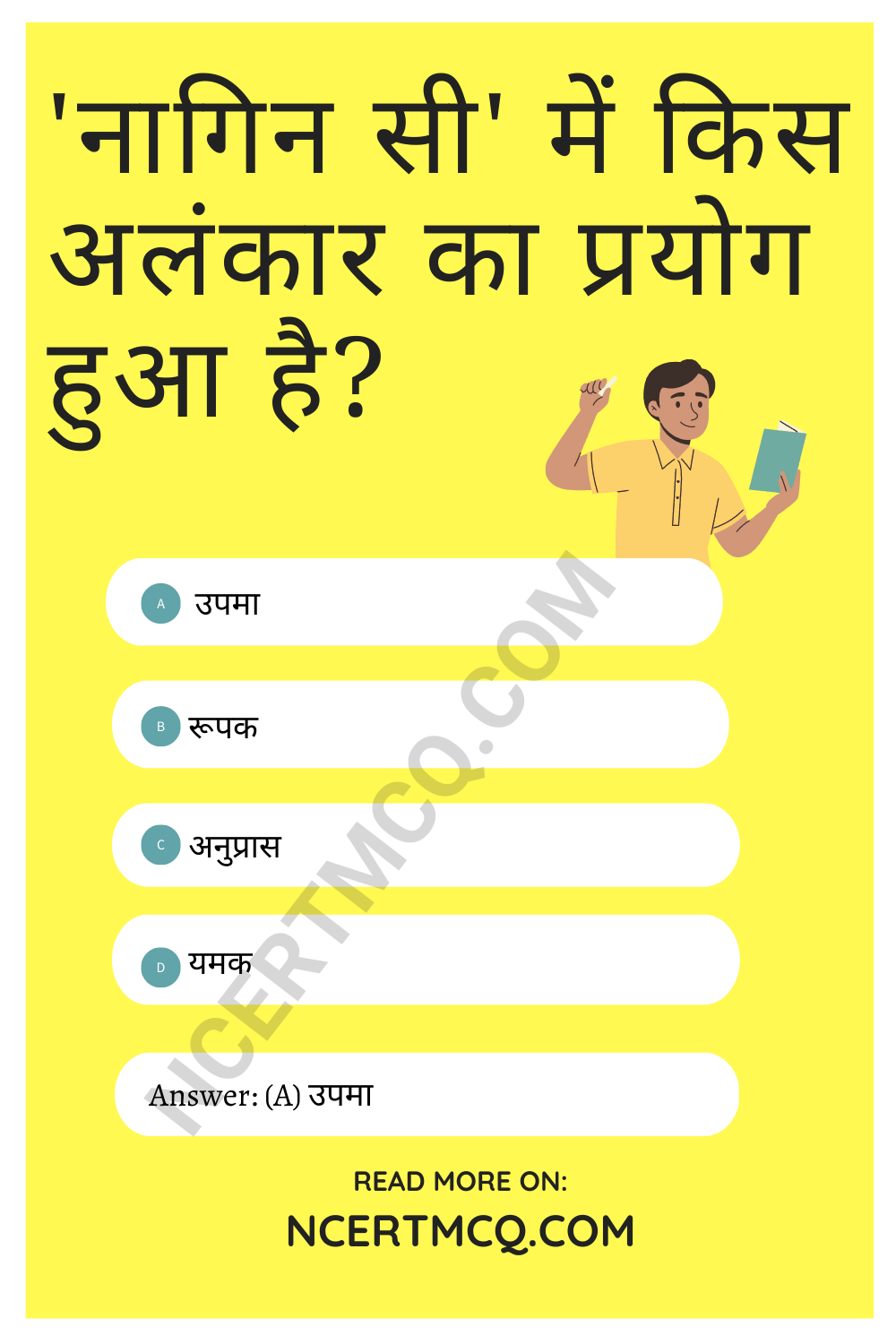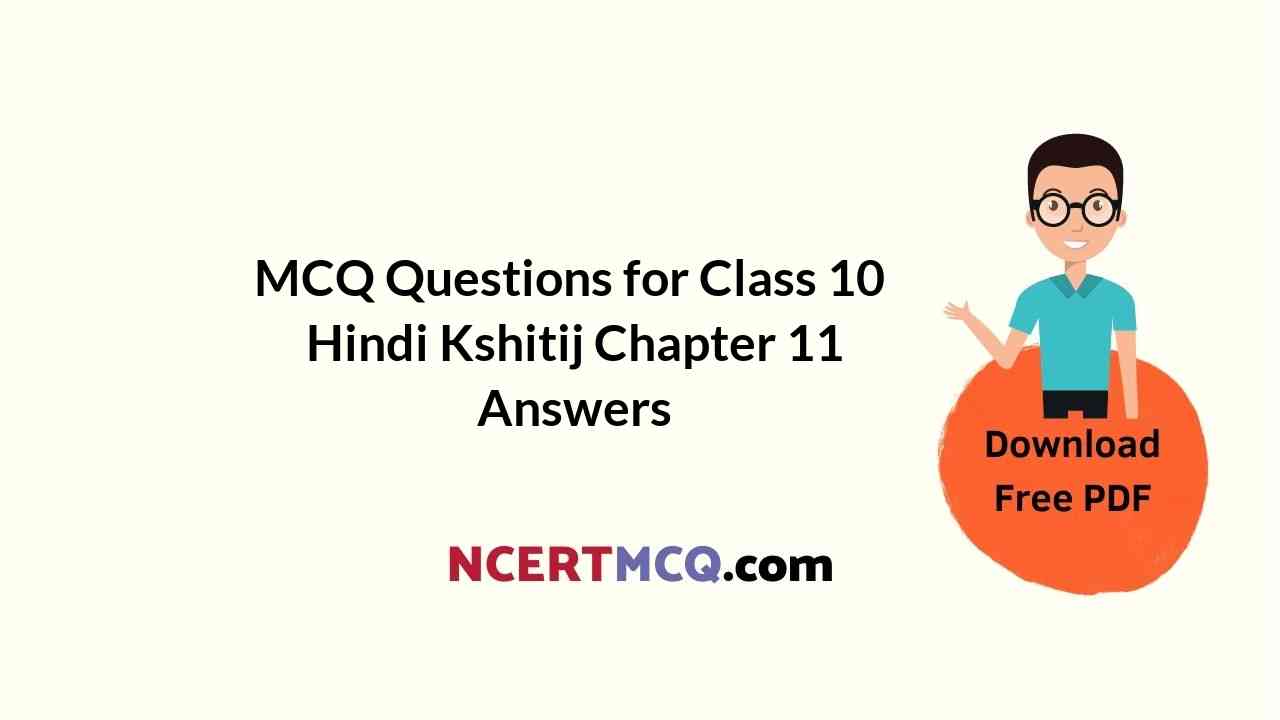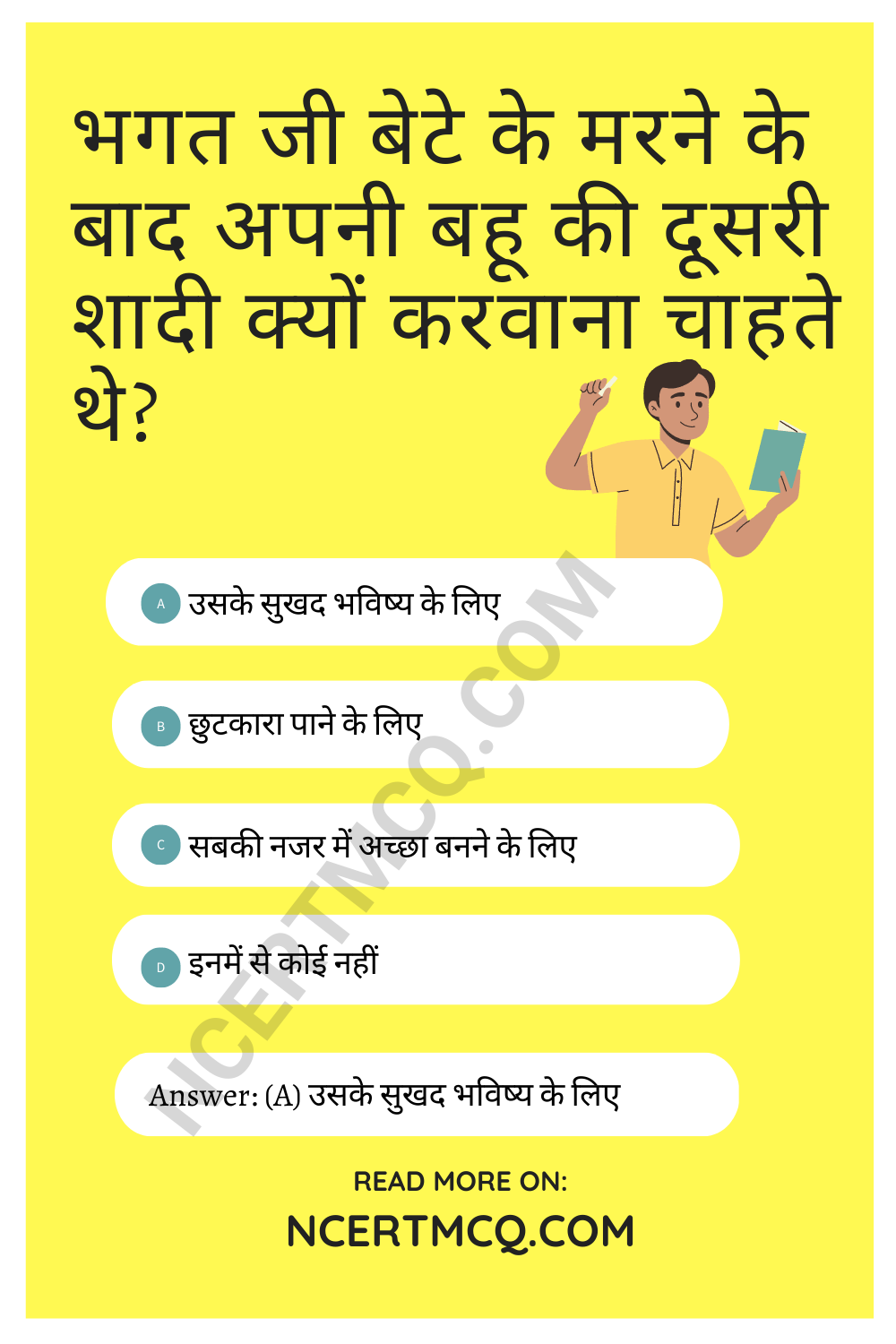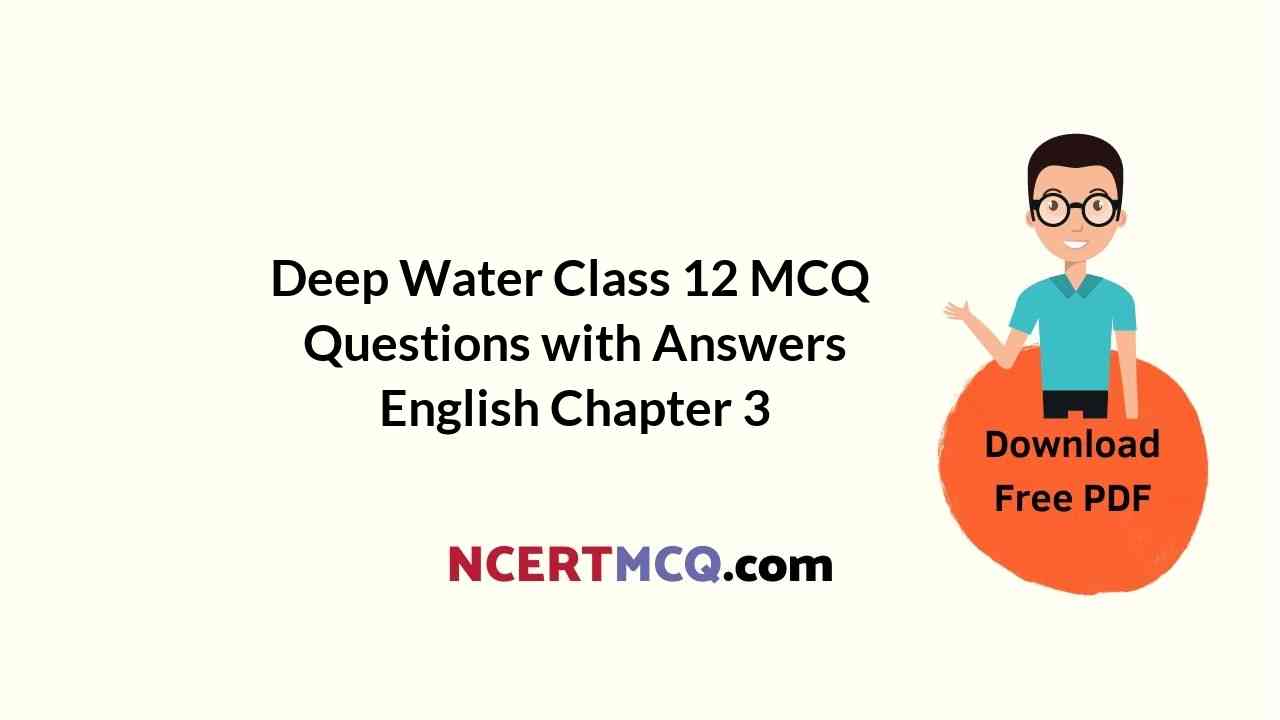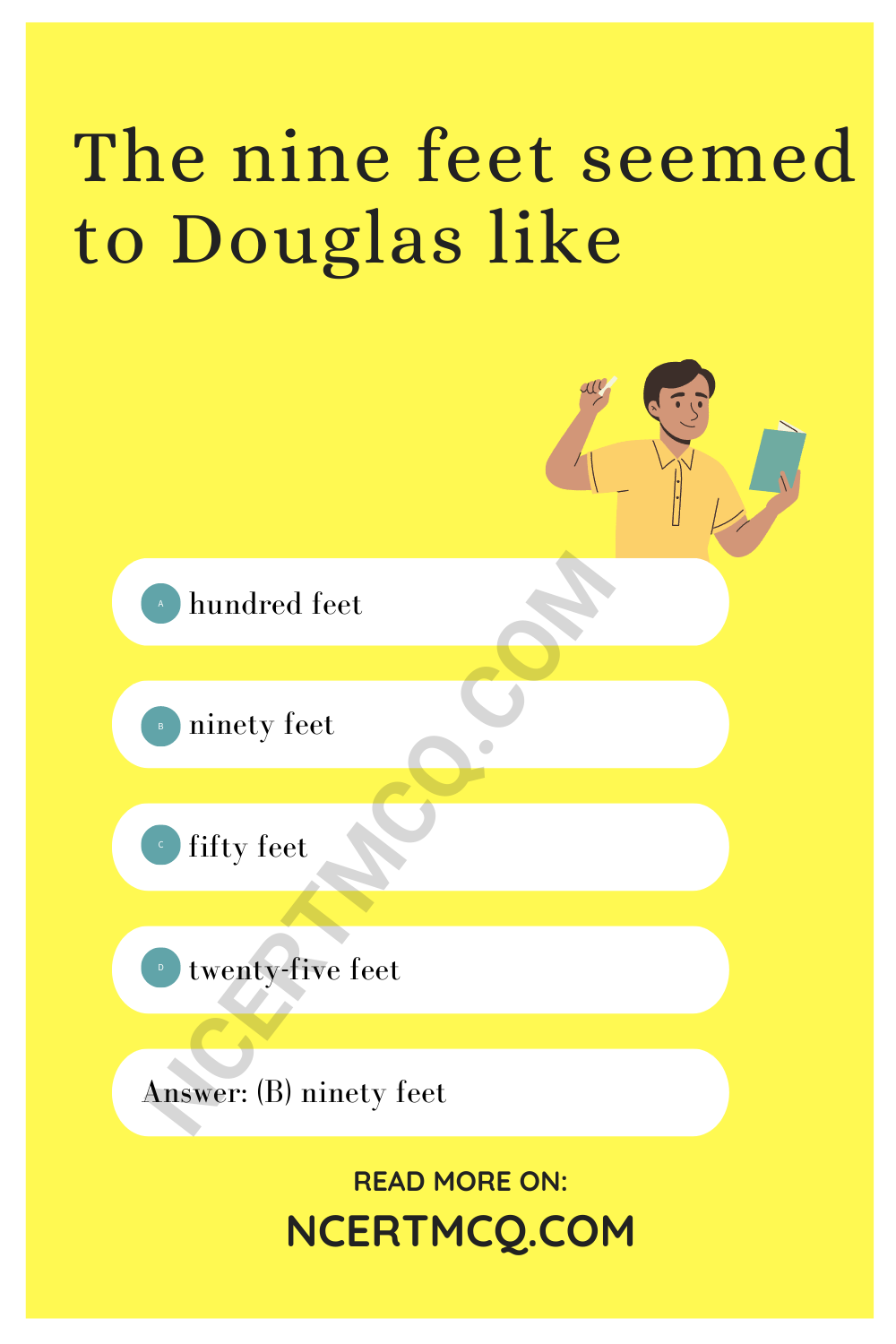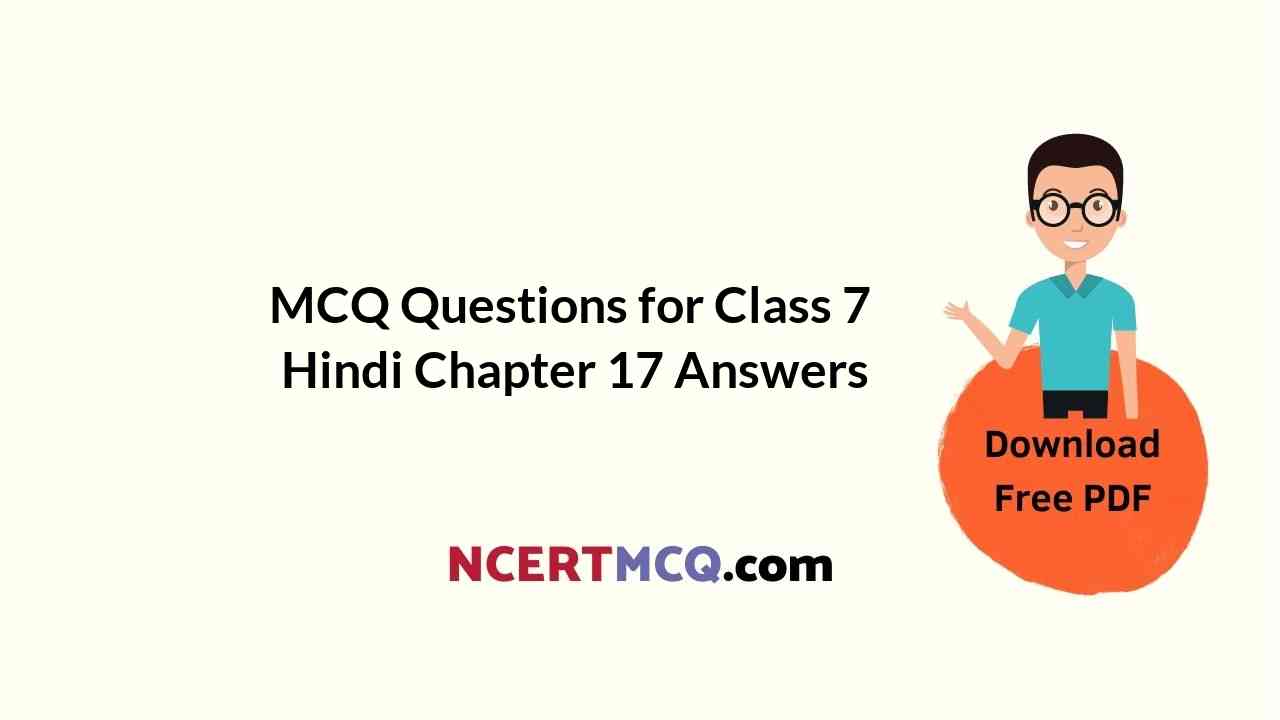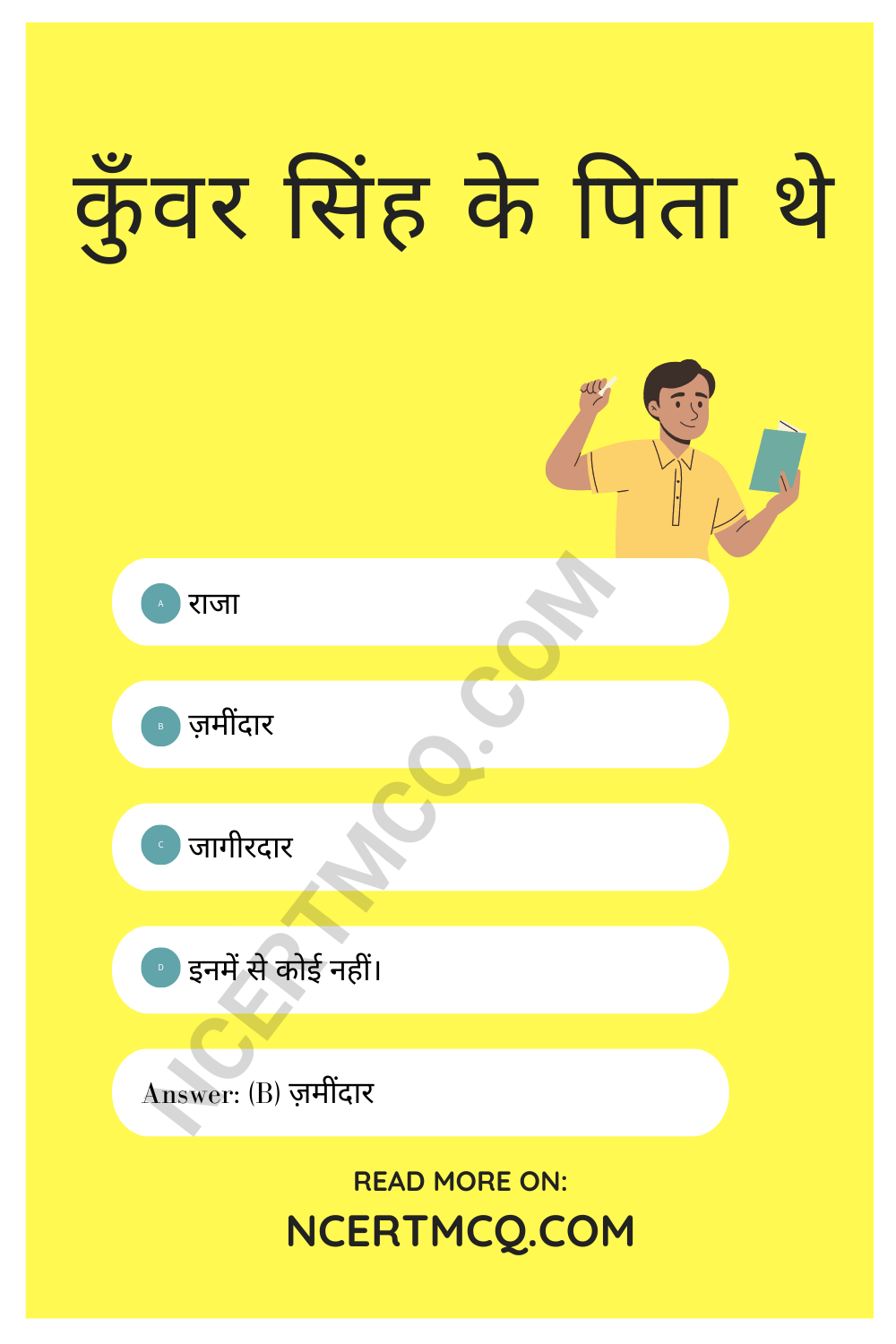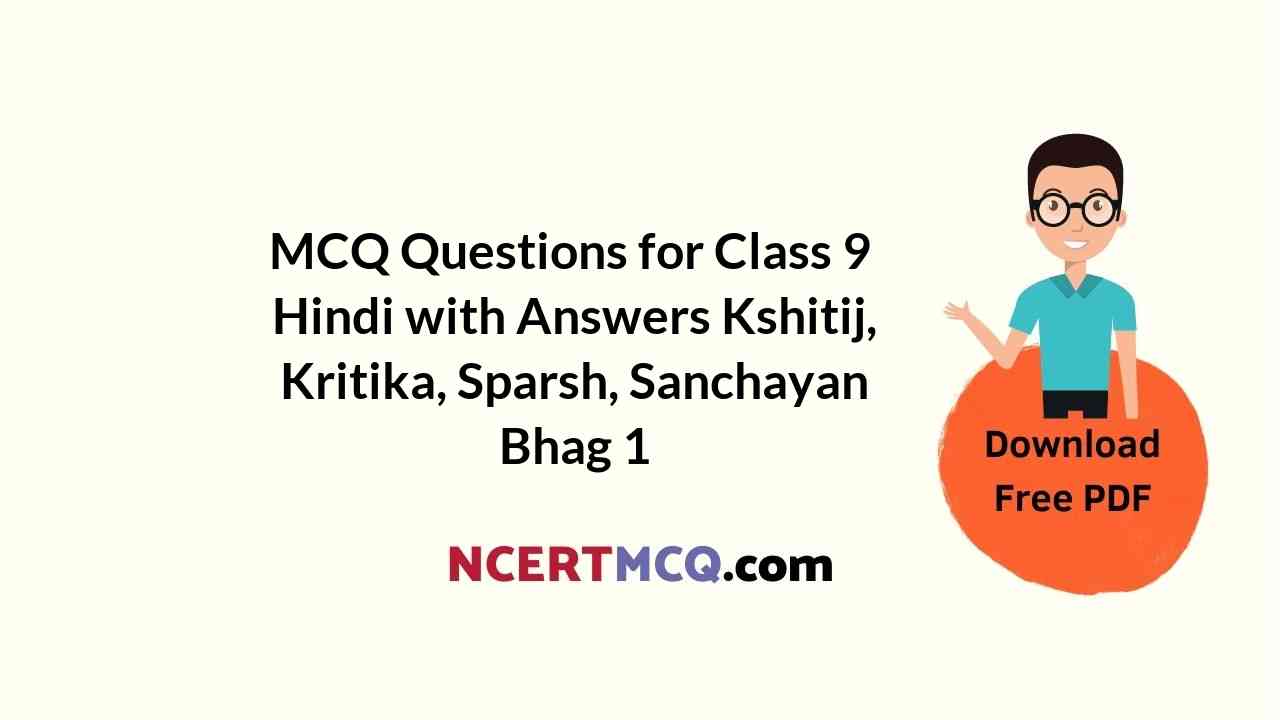Check the below Online Education NCERT MCQ Questions for Class 7 Hindi Vasant Chapter 16 भोर और बरखा with Answers Pdf free download. MCQ Questions for Class 7 Hindi with Answers were prepared based on the latest exam pattern. We have provided भोर और बरखा Class 7 Hindi MCQs Questions with Answers to help students understand the concept very well. https://ncertmcq.com/mcq-questions-for-class-7-hindi-with-answers/
Students can also read NCERT Solutions for Class 7 Hindi Chapter 16 Questions and Answers at LearnInsta. Here all questions are solved with a detailed explanation, It will help to score more marks in your examinations.
भोर और बरखा Class 7 MCQs Questions with Answers
Bhor Aur Barkha MCQ Class 7 Question 1.
‘भोर और बरखा’ कविता की रचयिता हैं?
(a) सुभद्रा कुमारी चौहान
(b) मीरा बाई
(c) महादेवी वर्मा
(d) विनीता पाण्डेय।
Answer
Answer: (b) मीरा बाई
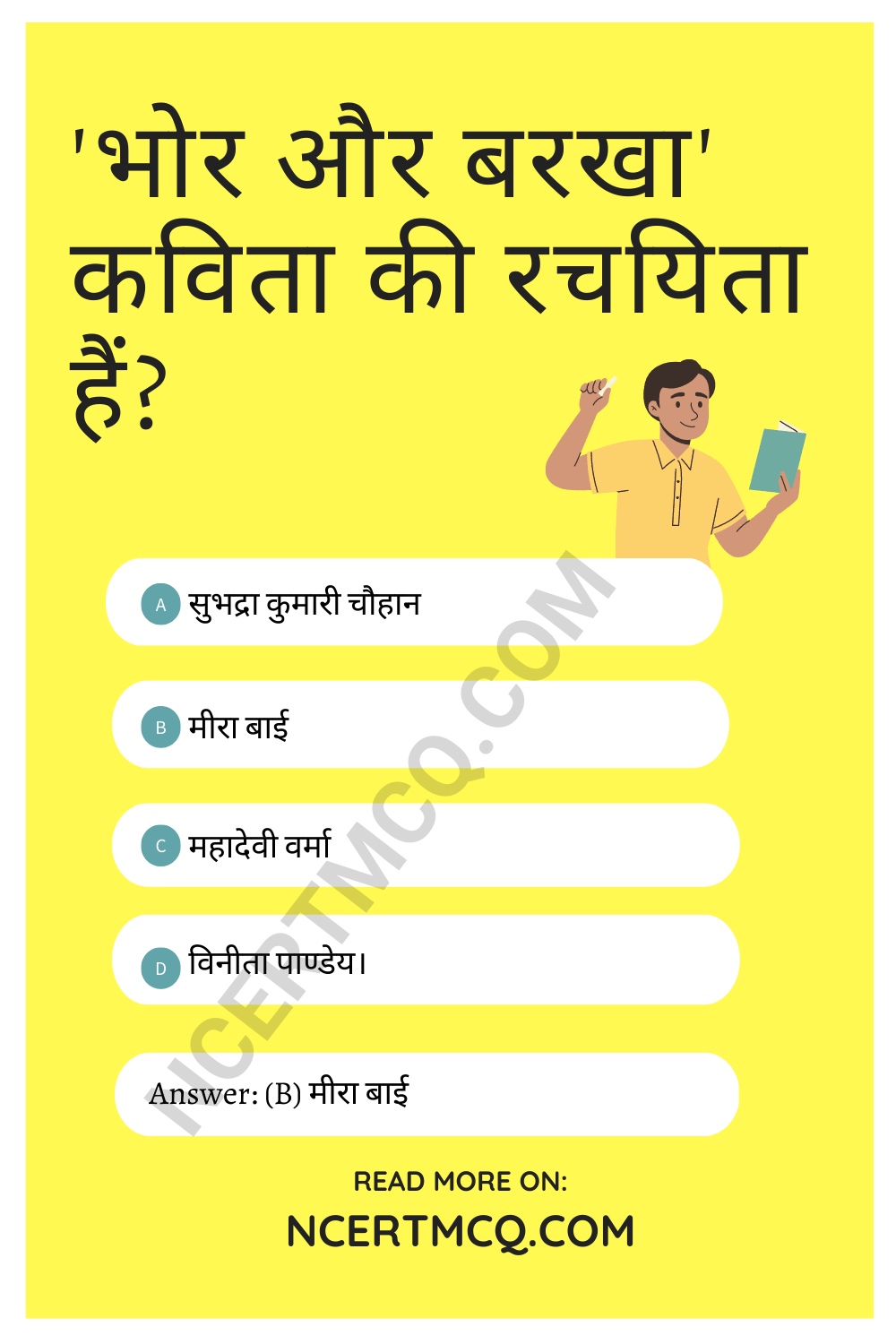
Class 7 Hindi Chapter 16 MCQ Question 2.
इस कविता में किसको जगाने का प्रयास किया जा रहा है?
(a) ग्वाल-बाल को
(b) बालक कृष्ण को
(c) राधा को
(d) कवयित्री को।
Answer
Answer: (b) बालक कृष्ण को
भोर और बरखा MCQ Class 7 Question 3.
दही कौन बिलो रही है?
(a) राधा
(b) यशोदा
(c) गोपियाँ
(d) ग्वाल-बाल।
Answer
Answer: (c) गोपियाँ
Bhor Aur Barkha Class 7 MCQ Question 4.
कृष्ण को जगाने के लिए द्वार पर कौन खड़े हैं?
(a) सारे ग्वाल-बाल
(b) यशोदा
(c) राधा
(d) देव और दानव।
Answer
Answer: (d) देव और दानव।
MCQ Questions For Class 7 Hindi Chapter 16 Question 5.
ग्वाल-बालकों के हाथ में क्या है?
(a) मक्खन
(b) रोटी-मक्खन
(c) रोटी
(d) मिसरी।
Answer
Answer: (b) रोटी-मक्खन
Ncert Class 7 Hindi Chapter 16 MCQ Question 6.
मीरा को किसके आने की भनक मिली।
(a) ग्वाल-बालों के आने की
(b) गोपियों के आने की
(c) श्रीकृष्ण के आने की
(d) माँ यशोदा के आने की।
Answer
Answer: (c) श्रीकृष्ण के आने की
Bhor Aur Barkha Class 7 Extra Questions Question 7.
इस कविता में किस ऋतु का वर्णन है-
(a) सर्द ऋतु का
(b) ग्रीष्म ऋतु
(c) वर्षा ऋतु
(d) वसंत ऋतु।
Answer
Answer: (c) वर्षा ऋतु
Bhor Or Barkha Class 7 MCQ Question 8.
किसके आने की आहट सुनकर मीरा प्रसन्न हो गई।
(a) गोपियों की
(b) ग्वाल-बालों की
(c) श्रीकृष्ण की
(d) सखियों की।
Answer
Answer: (c) श्रीकृष्ण की

(1)
जागो बंसीवारे ललना!
जागो मोरे प्यारे!
रजनी बीती, भोर भयो है, घर-घर खुले किंवारे।
गोपी दही मथत, सुनियत हैं कंगना के झनकारे॥
उठो लालजी! भोर भयो है, सुर-नर ठाढ़े द्वारे।
ग्वाल-बाल सब करत कुलाहल, जय-जय सबद उचारै ॥
माखन-रोटी हाथ मँह लीनी, गउवन के रखवारे।
मीरा के प्रभु गिरधर नागर, सरण आयाँ को तारै॥
Class 7 Hindi Ch 16 MCQ Question 1.
कौन किसे जगाने का प्रयास कर रही है?
Answer
Answer: माता यशोदा बालक कृष्ण को नींद से जगाने का प्रयास कर रही हैं।
Bhor Aur Barkha MCQ Questions Class 7 Question 2.
इन पदों में किस समय का चित्रण है?
Answer
Answer: इन पदों में भोर के समय का चित्रण है।
Class 7th Hindi Chapter 16 MCQ Question 3.
मीरा के प्रभु कौन हैं? वे क्या-क्या करते हैं?
Answer
Answer: मीरा के प्रभु श्रीकृष्ण हैं। वे शरण में आए लोगों का उद्धार करते हैं।
Class 7 Hindi Bhor Aur Barkha MCQ Question 4.
ग्वाल-बाल क्या कर रहे हैं?
Answer
Answer: ग्वाल-बाल कोलाहल कर रहे हैं और जय-जय का उद्घोष कर रहे हैं उनके हाथ में माखन-रोटी है।
Bhor Aur Barkha Extra Questions Class 7 Question 5.
श्रीकृष्ण की शरण में आने पर क्या होता है?
Answer
Answer: जो भक्त श्रीकृष्ण की शरण में आता है, श्रीकृष्ण उसका उद्धार कर देते हैं यानी बेड़ा पार कर देते हैं।
Question 6.
कुलाहल और सबद शब्दों का तत्सम रूप क्या होगा?
Answer
Answer: कुलाहल-कोलाहल, सबद-शब्द
(2)
बरसे बदरिया सावन की।
सावन की, मन-भावन की॥
सावन में उमग्यो मेरो मनवा, भनक सुनी हरि आवन की।
उमड़-घुमड़ चहुँदिस से आया, दामिन दमकै झर लावन की॥
नन्हीं-नन्हीं बूंदन मेहा बरसे, शीतल पवन सुहावन की।
मीरा के प्रभु गिरधर नागर! आनंद-मंगल गावन की।
Question 1.
इस ‘काव्यांश’ में किस ऋतु का वर्णन है ?
Answer
Answer: इस काव्यांश में वसंत ऋतु का वर्णन है।
Question 2.
किसका मन उमंग से भर गया है और क्यों?
Answer
Answer: कवयित्री मीरा का मन उमंग से भर गया क्योंकि उन्हें श्रीकृष्ण के आने की भनक हो गई।
Question 3.
पद के आधार पर प्राकृतिक वातावरण का चित्रण कीजिए।
Answer
Answer: यहाँ वर्षा ऋतु में चारों ओर बादल उमड़-घुमड़ रहे हैं, नन्ही-नन्हीं बूंदें बरस रही हैं, और बिजली चमक रही है। ठंड वायु बहने के साथ रिम-झिम बारिश हो रही है।
Question 4.
सावन मास, सुहावना क्यों बन गया?
Answer
Answer: सावन का मौसम अत्यधिक सुहावना हो गया है, क्योंकि चारों-तरफ़ आकाश में काले-काले बादल छा गए है। बिजली की चमक चारों तरफ़ फैल रही है। रिमझिम-रिमझिम बारिश हो रही है। सावन सुहावन हो गया है। मंद-मंद शीतल हवा बह रही है।
Question 5.
दामिन और उमग्यो का अर्थ लिखिए।
Answer
Answer: दामिन-बिजली, उमग्यो-उमंग से भरा हुआ।
We hope the given NCERT MCQ Questions for Class 7 Hindi Vasant Chapter 16 भोर और बरखा with Answers Pdf free download will help you. If you have any queries regarding CBSE Class 7 Hindi भोर और बरखा MCQs Multiple Choice Questions with Answers, drop a comment below and we will get back to you soon.
